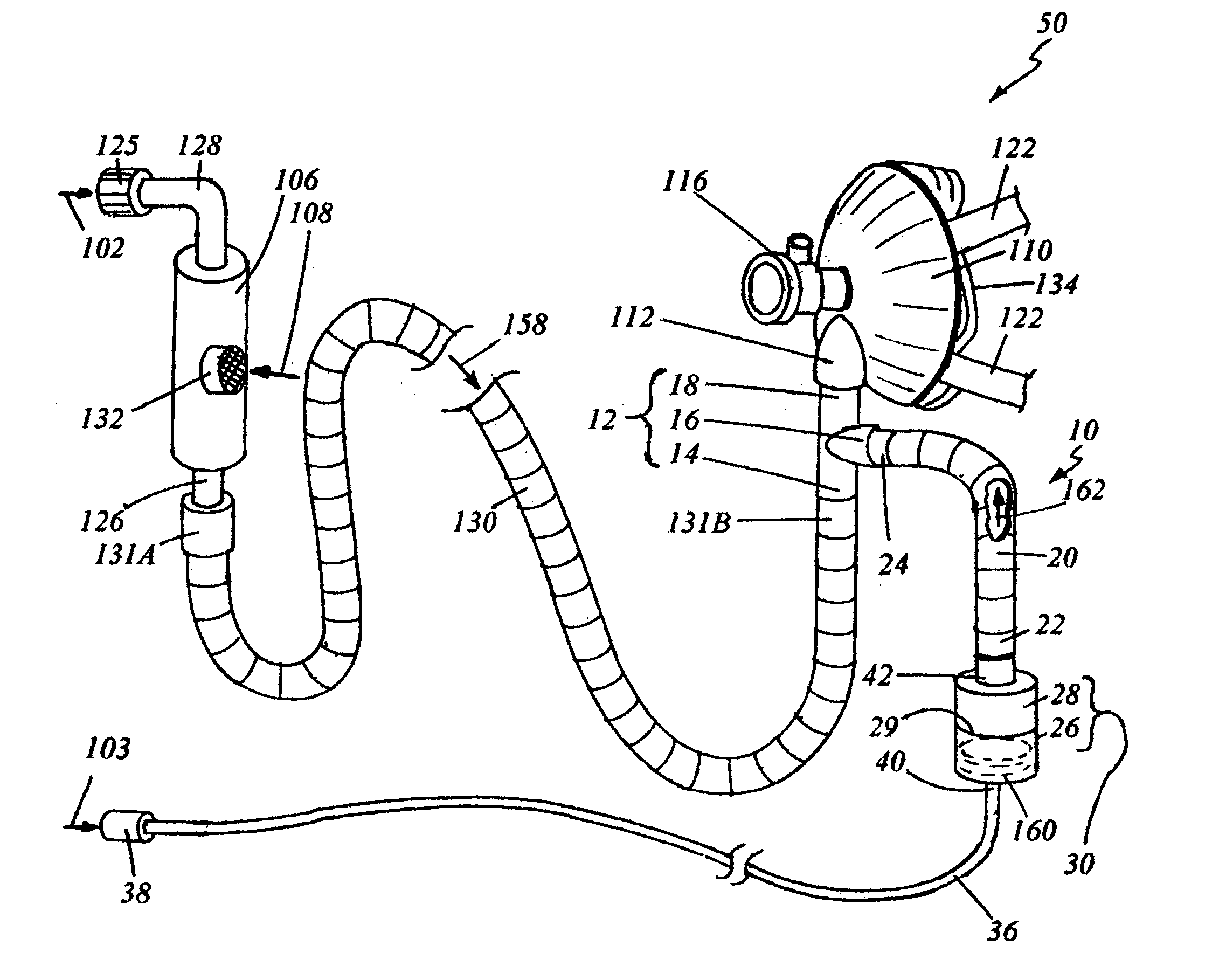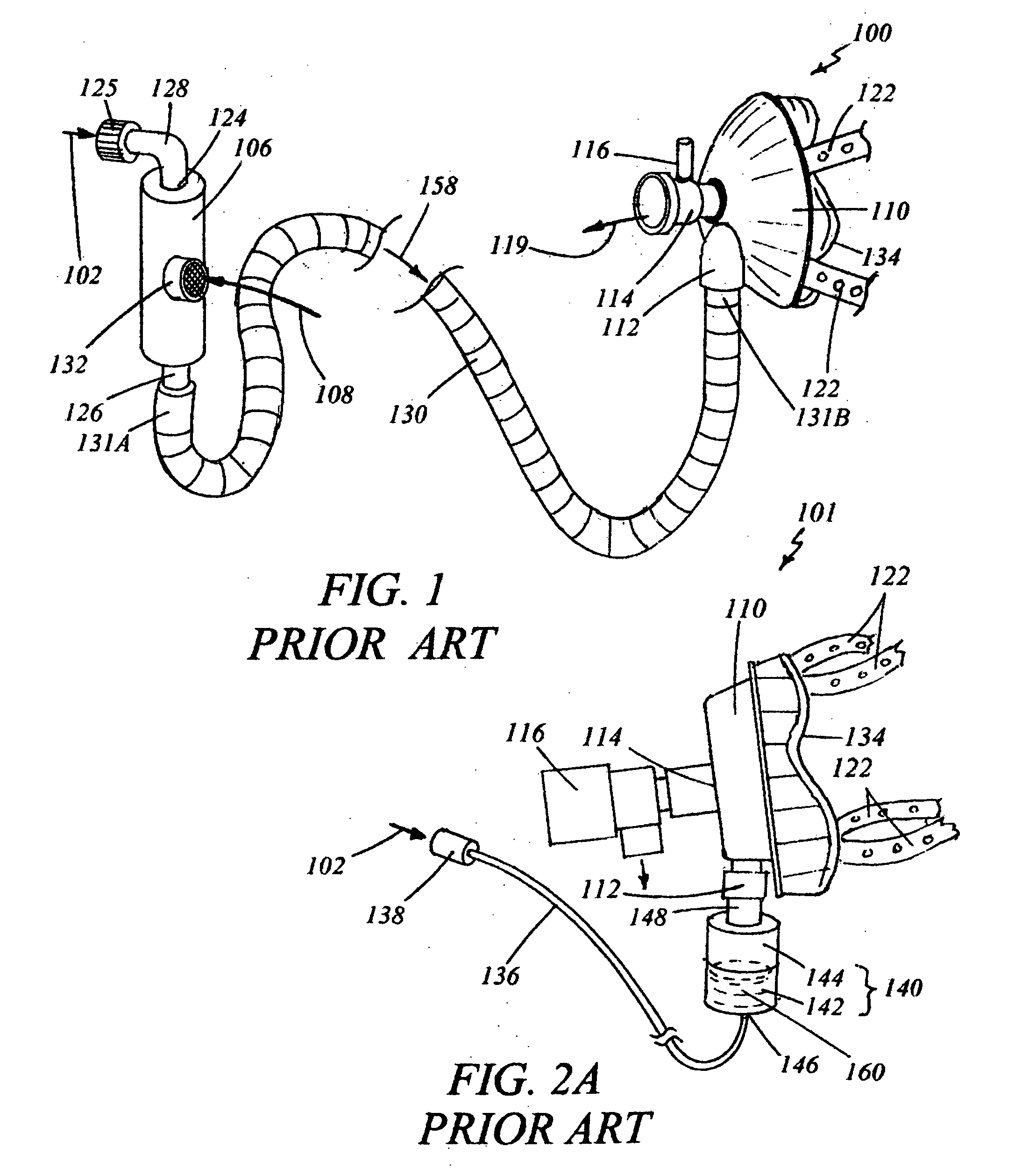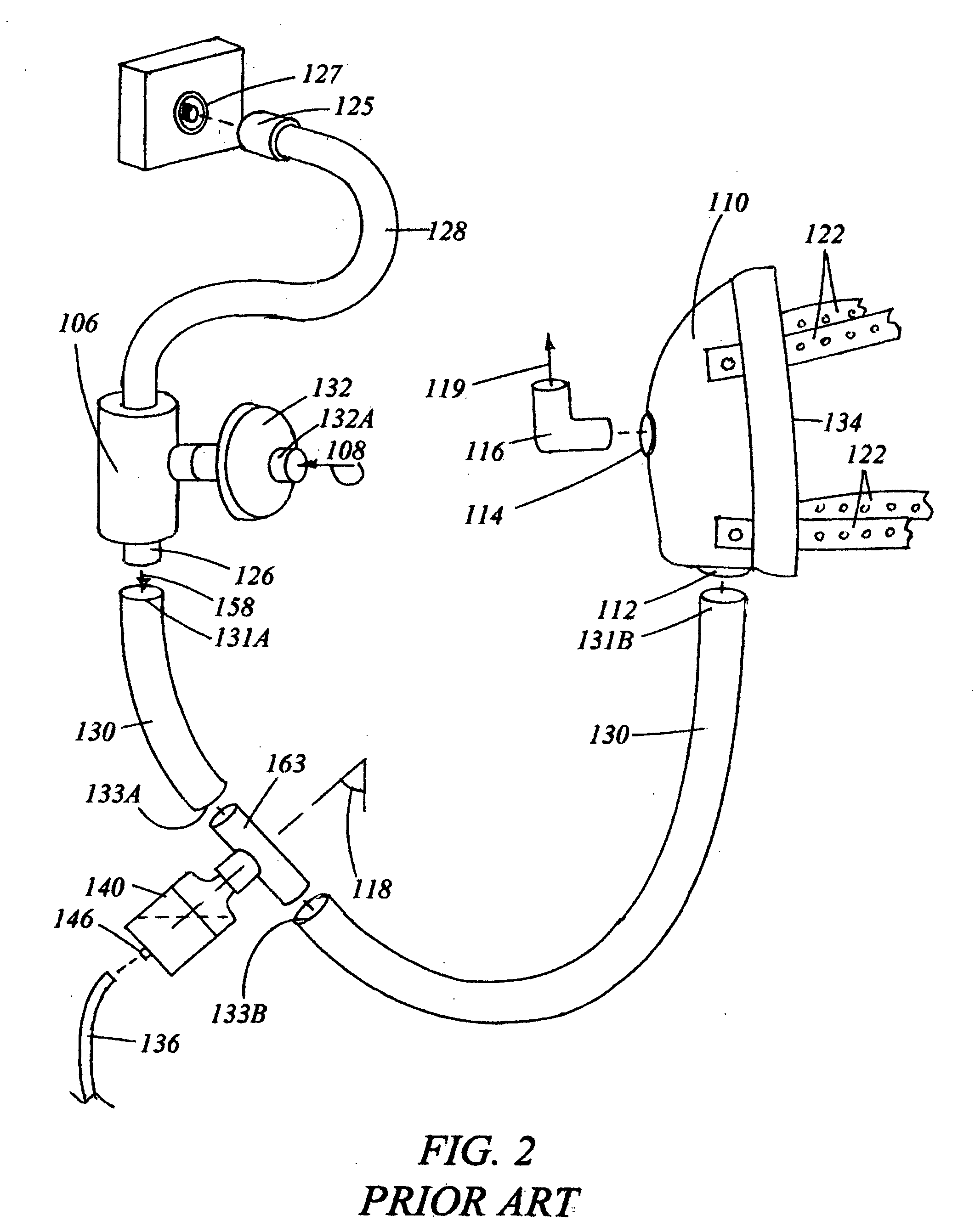Medication delivery device and method
a technology of medication delivery device and method, which is applied in the direction of lighting and heating apparatus, combustion types, applications, etc., can solve the problems of under-oxygenation of patients, ineffective method, and loss of airway pressure during medication delivery, and achieves high controllable nebulization rate and higher rate
- Summary
- Abstract
- Description
- Claims
- Application Information
AI Technical Summary
Benefits of technology
Problems solved by technology
Method used
Image
Examples
Embodiment Construction
[0045] The present invention comprises an apparatus and method for administering a nebulized medication into a patient undergoing emergency oxygen therapy in which the patient's airway is continuously subjected to an elevated pressure during both inhalation and exhalation cycles. The oxygen therapy method is commonly known as Continuous Positive Airway Pressure (CPAP). In the past, it has been largely used in hospital settings. CPAP has now been approved in some states for use by Emergency Medical Technicians (EMT's) without the attendance of physicians or paramedics, such as in emergency vehicles (e.g. ambulances). The CPAP method provides an effective and advantageous alternative to invasive tracheotomy surgery and endotracheometric intubation. The method utilizes some of the same equipment used in simple mask oxygenation.
[0046] In CPAP, the face mask pressure of a patient is typically preset or adjusted within a broad range from about 1 cm. H2O to about 25 cm. H2O (or higher) ab...
PUM
 Login to View More
Login to View More Abstract
Description
Claims
Application Information
 Login to View More
Login to View More - R&D
- Intellectual Property
- Life Sciences
- Materials
- Tech Scout
- Unparalleled Data Quality
- Higher Quality Content
- 60% Fewer Hallucinations
Browse by: Latest US Patents, China's latest patents, Technical Efficacy Thesaurus, Application Domain, Technology Topic, Popular Technical Reports.
© 2025 PatSnap. All rights reserved.Legal|Privacy policy|Modern Slavery Act Transparency Statement|Sitemap|About US| Contact US: help@patsnap.com



